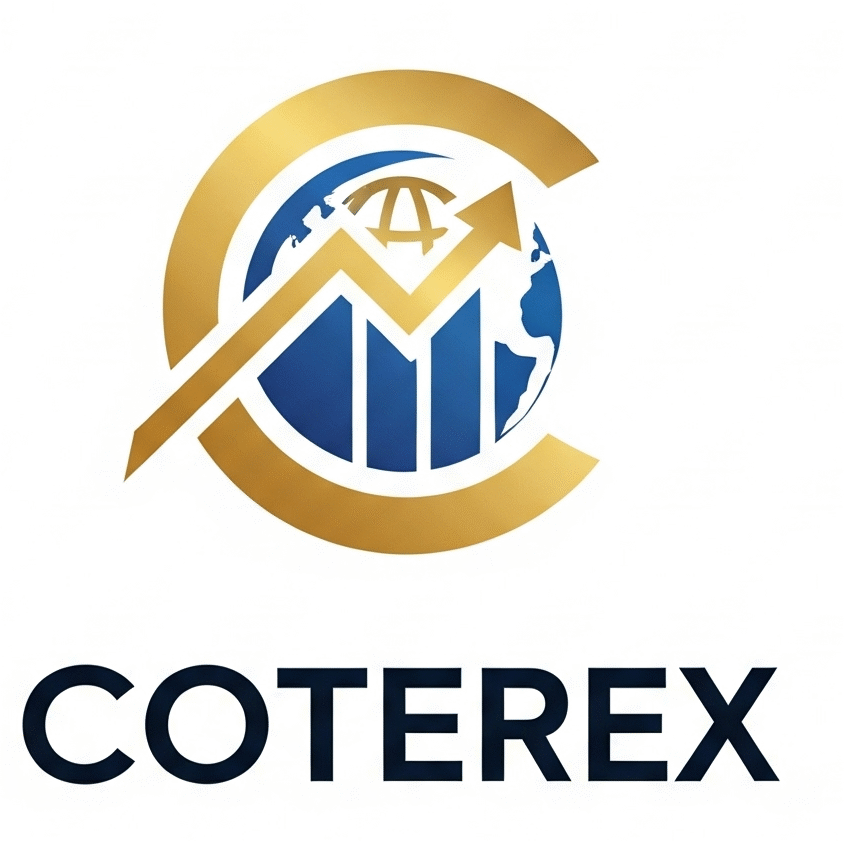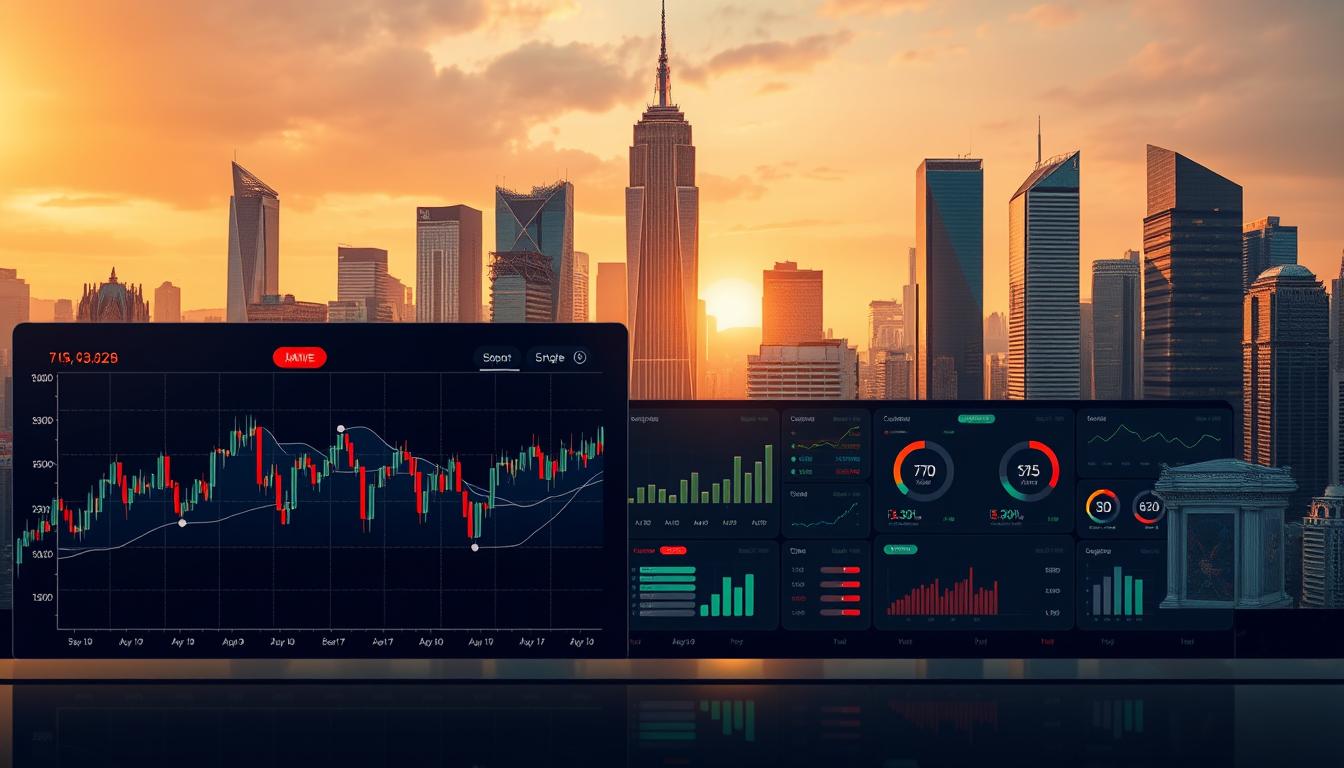Day Trading vs Swing Trading: Which is Better in 2025?
Choosing the right trading style is crucial for success in the financial markets.
In 2025, traders are faced with a multitude of options, but two popular strategies stand out: day trading and swing trading.

Understanding the differences between these two approaches is essential to determining which one is better suited to your needs.
This article will delve into the specifics of day trading vs swing trading, helping you make an informed decision.
Key Takeaways
- Understanding the basics of day trading and swing trading.
- Key differences between day trading and swing trading.
- Factors to consider when choosing a trading style.
- Pros and cons of each trading approach.
- Tips for success in your chosen trading style.
Understanding the Trading Landscape in 2025
As we step into 2025, the trading landscape is undergoing significant transformations due to evolving market dynamics and technological advancements. The trading environment is becoming increasingly complex, with various factors influencing market behavior.
Current Market Dynamics
Market dynamics in 2025 are characterized by heightened volatility and a shift towards more sustainable and ESG (Environmental, Social, and Governance) focused investments. This shift is driven by both regulatory changes and investor preferences.
Technological Advancements Affecting Trading
Technological advancements are revolutionizing trading practices. The use of AI, machine learning, and blockchain technology is becoming more prevalent, offering traders new tools for analysis and execution. These technologies are enhancing trading efficiency and decision-making.
2025 Market Outlook
Looking ahead to 2025, the market outlook suggests continued growth in the tech sector, with emerging technologies like quantum computing and 5G expected to drive innovation. The table below summarizes key market trends and their potential impact on trading.
| Market Trend | Impact on Trading |
|---|---|
| Increased Adoption of AI | Enhanced trading strategies and decision-making |
| Growth in ESG Investments | Shift towards sustainable investment options |
| Advancements in Blockchain | Improved security and transparency in transactions |
What is Day Trading?
In the fast-paced world of financial markets, day trading has emerged as a favored approach among active traders. Day trading involves making multiple trades within a single trading day, with all positions closed before the market closes.
Definition and Core Principles
Day trading is defined by its focus on short-term market movements, requiring traders to be highly attentive and responsive to market fluctuations. The core principles include:
- Closing all positions before the market closes to avoid overnight risks.
- Utilizing technical analysis to predict intraday price movements.
- Managing risk through strict stop-loss orders and position sizing.
Typical Day Trading Timeframes
Day traders operate within various timeframes, from a few minutes to the entire trading day. Common timeframes include:
| Timeframe | Description |
|---|---|
| Scalping | Making multiple small trades in a short period, often in minutes. |
| Intraday Trading | Holding positions for a few hours, capturing trends within the day. |
Common Day Trading Strategies
Day traders employ various strategies to capitalize on market movements. Some popular strategies include:
- Trend Following: Riding the momentum of trending stocks.
- Range Trading: Buying and selling within established price ranges.
- News-Based Trading: Reacting to news events that impact stock prices.
What is Swing Trading?
Swing trading has emerged as a popular trading method, allowing traders to capitalize on market movements over a period of days or weeks. This approach to trading is particularly appealing to those who cannot dedicate their day to constant market monitoring, as required in day trading.
Definition and Fundamental Concepts
Swing trading is defined by its focus on capturing gains in a stock or other security over a short-term period, typically ranging from a few days to several weeks. It involves analyzing the market to predict price movements and then holding a position until the expected movement occurs.
Key principles of swing trading include understanding market trends, identifying potential entry and exit points, and managing risk through various strategies.
Typical Swing Trading Timeframes
The timeframe for swing trading can vary, but it generally involves holding positions for more than one day but less than a few months. Typical timeframes range from 2 to 30 days, allowing traders to ride the wave of market trends without being glued to their screens.
Popular Swing Trading Strategies
Swing traders often employ a variety of strategies to maximize their returns. Some popular approaches include:
- Trend following: Riding the momentum of a stock in a particular direction.
- Range trading: Buying and selling within established price ranges.
- Scalping: Making numerous small trades to capitalize on minor price movements.
To illustrate the potential of swing trading, consider the following comparison of trading outcomes:
| Strategy | Typical Holding Period | Potential Return |
|---|---|---|
| Trend Following | 1-3 weeks | 5-15% |
| Range Trading | 2-10 days | 3-8% |
| Scalping | 1-60 minutes | 1-3% |
By understanding and applying these strategies, traders can better navigate the markets and potentially achieve their financial goals through swing trading.
Day Trading vs Swing Trading: Which is Better for You in 2025?
The decision between day trading and swing trading hinges on personal trading goals, risk tolerance, and market conditions in 2025. Both trading styles have their unique advantages and challenges, making it essential to understand their key differences and how they align with your individual needs.
Key Differences at a Glance
Day trading involves making multiple trades within a single day, closing all positions before the market closes. This style requires a significant amount of time and attention, as traders need to constantly monitor market movements. On the other hand, swing trading involves holding positions for several days or weeks, allowing for more flexibility in terms of time commitment.
Key differences between day trading and swing trading include:
- Time commitment: Day trading requires a full-day commitment, while swing trading can be managed with less daily time.
- Market exposure: Day traders close their positions daily, avoiding overnight risks, whereas swing traders are exposed to market fluctuations over several days or weeks.
- Trading frequency: Day traders make multiple trades daily, while swing traders make fewer trades over a longer period.
Suitability Based on Personal Factors
When deciding between day trading and swing trading, it’s crucial to consider your personal factors, including your financial goals, risk tolerance, and available time. Day trading is more suited for individuals who can dedicate a significant amount of time to monitoring the markets and have a higher risk tolerance. Swing trading, on the other hand, may be more appropriate for those who prefer a more relaxed approach and are willing to hold positions over a longer period.
Adapting to 2025’s Market Conditions
The market conditions in 2025 will play a significant role in determining the effectiveness of your trading strategy. With technological advancements and changing market dynamics, traders need to be adaptable. Understanding how to adjust your day trading or swing trading strategy to the prevailing market conditions can significantly enhance your trading performance.
Ultimately, the choice between day trading and swing trading in 2025 should be based on a thorough analysis of your personal trading goals, risk management capabilities, and the current market landscape.
Time Commitment: Day Trading vs Swing Trading
The time you dedicate to trading can significantly impact your success, whether you’re day trading or swing trading. Understanding the time commitment required for each trading style is essential for making an informed decision.
Daily Hours Required for Day Trading
Day trading demands a significant time commitment, often requiring traders to be glued to their screens for several hours a day. Typically, day traders spend at least 4-6 hours daily monitoring markets, analyzing data, and making trades.
Weekly Hours Required for Swing Trading
In contrast, swing trading requires less daily time commitment. Swing traders usually dedicate a few hours each week to analyzing trends, setting up trades, and monitoring their positions. The weekly time commitment can range from 5-10 hours, depending on the trader’s strategy and market conditions.
Balancing Trading with Other Commitments
Balancing trading with other life commitments is crucial. Day traders need to ensure they can dedicate the required time without compromising their other responsibilities. Swing traders, on the other hand, have more flexibility, allowing them to balance trading with other aspects of their life more easily.
In conclusion, understanding the trading time commitment is vital for choosing between day trading and swing trading. Your decision should be based on your available time, trading goals, and personal preferences.
Capital Requirements and Potential Returns
The financial commitment required for day trading and swing trading differs, impacting potential returns. When considering which trading strategy to adopt, understanding the capital requirements and potential financial outcomes is crucial.
Minimum Capital for Day Trading
Day trading typically requires a significant amount of capital to meet the demands of frequent buying and selling within a single trading day. In the United States, the Financial Industry Regulatory Authority (FINRA) requires day traders to maintain a minimum equity of $25,000 in their margin accounts. This requirement is in place to ensure that traders can cover potential losses.
Key factors influencing the minimum capital for day trading include:
- The type of securities being traded
- The trading platform’s requirements
- The trader’s risk tolerance
Minimum Capital for Swing Trading
Swing trading, on the other hand, involves holding positions for longer periods, typically from a few days to several weeks. The capital requirements for swing trading are generally lower than those for day trading. While there’s no specific regulatory minimum for swing trading, having sufficient capital to cover margin requirements and potential drawdowns is essential.

Realistic Return Expectations for Both Approaches
Return expectations vary between day trading and swing trading due to differences in their strategies and market exposure. Day trading involves frequent transactions, which can result in higher transaction costs but also potentially higher returns if trades are successful. Swing trading, with its longer holding periods, may offer more stable returns over time, as it allows traders to ride out market fluctuations.
Realistic return expectations for traders include:
- Day trading: 20-50% annual returns for experienced traders
- Swing trading: 10-30% annual returns, depending on market conditions
Risk Management Strategies for Each Trading Style
Risk management is the backbone of any successful trading strategy, whether you’re a day trader or a swing trader. Effective risk management involves understanding the unique risks associated with each trading style and implementing strategies to mitigate those risks.
Day Trading Risk Controls
Day trading involves rapid buying and selling within a single trading day, requiring strict risk controls to manage the high level of market exposure. Key risk controls for day traders include setting tight stop-loss orders, limiting position sizes, and avoiding over-leveraging.
Day traders must also be mindful of market volatility and liquidity, as these factors can significantly impact trade execution and risk exposure.
Swing Trading Risk Controls
Swing trading, which involves holding positions for several days or weeks, requires a different approach to risk management. Swing traders need to be aware of overnight risks and potential gaps in price due to news events or market sentiment changes.
To manage these risks, swing traders often use wider stop-loss orders compared to day traders and may adjust their position sizes based on the expected holding period.
Position Sizing and Stop Loss Strategies
A crucial aspect of risk management for both day and swing traders is position sizing. This involves determining the appropriate amount of capital to allocate to each trade based on the trader’s risk tolerance and account size.
Stop-loss strategies are also vital, as they help limit potential losses by automatically closing trades when they reach a certain price level.
By combining effective position sizing with well-planned stop-loss strategies, traders can significantly reduce their exposure to risk and improve their overall trading performance.
Psychological Factors: Which Trading Style Suits Your Personality?
The psychological demands of trading can significantly impact your performance, making it essential to choose a style that fits your personality. Both day trading and swing trading have unique psychological requirements that can affect traders in different ways.
Psychological Demands of Day Trading
Day trading requires a high level of mental alertness and the ability to make rapid decisions. The fast-paced environment can be stressful, and traders need to be able to manage their emotions to avoid impulsive decisions.
- High Stress Levels: The need to make quick decisions can lead to high stress levels.
- Emotional Control: Traders must be able to control their emotions to avoid making impulsive trades.
- Focus: Maintaining focus throughout the trading day is crucial.
Psychological Demands of Swing Trading
Swing trading, on the other hand, requires patience and the ability to hold positions for extended periods. This style can be less stressful than day trading but still requires discipline.
- Patience: Swing traders need to be patient and wait for the right opportunities.
- Discipline: Sticking to a trading plan is essential for swing traders.
- Adaptability: Being able to adapt to changing market conditions is vital.
Self-Assessment Questions
To determine which trading style suits your personality, ask yourself the following questions:
- Can you handle high levels of stress and make quick decisions?
- Do you have the patience to hold trades for extended periods?
- How well do you manage your emotions during market volatility?
By understanding your psychological profile and the demands of each trading style, you can make an informed decision about which approach is best for you.

Tools and Resources Needed for Success
Effective trading in 2025 requires a blend of knowledge, strategy, and the right technological tools. To excel in day trading or swing trading, one must be equipped with the appropriate platforms and resources.
Essential Day Trading Platforms and Tools
Day traders rely heavily on advanced trading platforms that offer real-time data, rapid execution speeds, and robust analytical tools. Popular choices include MetaTrader 5 and NinjaTrader, which provide comprehensive charting capabilities and customizable indicators.
Additionally, day traders often utilize Level II quotes to gauge market depth and hot keys for swift order execution. The integration of AI-driven trading bots can also enhance decision-making processes.
Essential Swing Trading Platforms and Tools
Swing traders, on the other hand, may prioritize platforms that offer more in-depth analysis and less emphasis on ultra-fast execution. Tools like TradingView are favored for their advanced charting features and community-driven insights.
Swing traders also benefit from economic calendars to stay abreast of market-moving events and scan tools to identify potential trading opportunities.
AI and Algorithmic Trading Considerations
The rise of AI and algorithmic trading has transformed both day and swing trading landscapes. These technologies enable traders to automate strategies, reducing emotional bias and increasing efficiency.
| Feature | Day Trading | Swing Trading |
|---|---|---|
| Execution Speed | Critical | Less Critical |
| Analytical Tools | Advanced Charting | In-depth Analysis |
| AI Integration | High Frequency Bots | Strategy Automation |
By understanding and leveraging these tools and resources, traders can significantly enhance their potential for success in 2025.
Regulatory Considerations for US Traders
As a trader in the US, it’s crucial to understand the regulatory landscape that governs your trading activities in 2025. The regulatory environment is complex and involves various rules and guidelines that traders must comply with.
Pattern Day Trader Rules
The Pattern Day Trader (PDT) rule is a significant regulation that affects traders. According to the Financial Industry Regulatory Authority (FINRA), a pattern day trader is someone who executes four or more day trades within five business days, provided that the number of day trades is more than 6% of the total trades in the account during that period. To comply with the PDT rule, traders must maintain a minimum equity of $25,000 in their margin account.
Tax Implications for Different Trading Styles
Trading style can significantly impact tax obligations. For instance, day traders are subject to the mark-to-market tax treatment if they qualify as a trader under IRS rules. This allows them to deduct trading losses against other income without being limited by the $3,000 capital loss deduction limit for investors. In contrast, swing traders are typically treated as investors for tax purposes, subject to capital gains tax on their profits.
Compliance Requirements in 2025
In 2025, US traders must comply with various regulatory requirements, including reporting trades on their tax returns and adhering to the PDT rule. It’s essential for traders to stay informed about any changes in regulations that could impact their trading activities.
By understanding and complying with these regulatory considerations, US traders can avoid potential penalties and optimize their trading strategies in 2025.
Conclusion: Making Your Choice in 2025
As we navigate the complexities of trading in 2025, understanding the nuances between day trading vs swing trading is crucial. Both styles have their unique advantages and challenges, and the right choice depends on individual preferences, risk tolerance, and market conditions.
Day trading and swing trading require different approaches to trading styles, with day trading demanding intense focus and rapid decision-making, while swing trading allows for a more relaxed pace with a focus on longer-term trends.
Ultimately, the decision between day trading vs swing trading in 2025 should be based on a thorough self-assessment and a clear understanding of the trading landscape. By considering factors such as time commitment, capital requirements, and risk management, traders can make an informed choice that aligns with their goals and preferences.
As the trading environment continues to evolve, staying adaptable and informed will be key to success in 2025. Whether you opt for day trading or swing trading, leveraging the right tools, resources, and strategies will be essential in navigating the markets effectively.
FAQ
What is the main difference between day trading and swing trading?
Day trading involves buying and selling financial instruments within a single trading day, while swing trading involves holding positions for a shorter period than investing, but longer than a day, typically ranging from a few days to a few weeks.
Which trading style is more suitable for beginners, day trading or swing trading?
Swing trading is often considered more suitable for beginners because it allows for more time to analyze the market and make decisions, whereas day trading requires quick decisions and constant market monitoring.
How much capital is required for day trading and swing trading?
The minimum capital required for day trading varies, but it is generally higher than for swing trading. For day trading, the Pattern Day Trader rule in the US requires a minimum equity of $25,000. Swing trading can be done with less capital, but it’s essential to have enough to cover margin requirements and potential losses.
What are the key risk management strategies for day trading and swing trading?
For both day trading and swing trading, key risk management strategies include setting stop-loss orders, position sizing, and limiting the amount of capital allocated to each trade. Day traders may also use techniques like scaling in and out of trades.
How do market conditions in 2025 affect day trading and swing trading?
Market conditions, including volatility and trends, can significantly impact both day trading and swing trading. Traders need to adapt their strategies to the current market conditions, using technical analysis and staying informed about market news and trends.
What are the psychological demands of day trading compared to swing trading?
Day trading is often more stressful and demanding due to the need to make quick decisions and constantly monitor the markets. Swing trading, while still requiring discipline, allows for more time to reflect on trades and make more considered decisions.
Are there specific tools or platforms recommended for day trading or swing trading?
Both day traders and swing traders can benefit from using advanced trading platforms that offer real-time data, technical analysis tools, and efficient order execution. Popular platforms include MetaTrader, NinjaTrader, and TradingView, among others.
How do regulatory considerations, such as the Pattern Day Trader rule, impact trading decisions?
The Pattern Day Trader rule can significantly impact day trading strategies, as it requires maintaining a minimum equity balance of $25,000. Traders should be aware of this and other regulatory requirements when planning their trading activities.
Can AI and algorithmic trading be used for both day trading and swing trading?
Yes, AI and algorithmic trading strategies can be applied to both day trading and swing trading. These strategies use computer programs to automate trading decisions based on predefined criteria, which can be beneficial for both short-term and slightly longer-term trading approaches.



